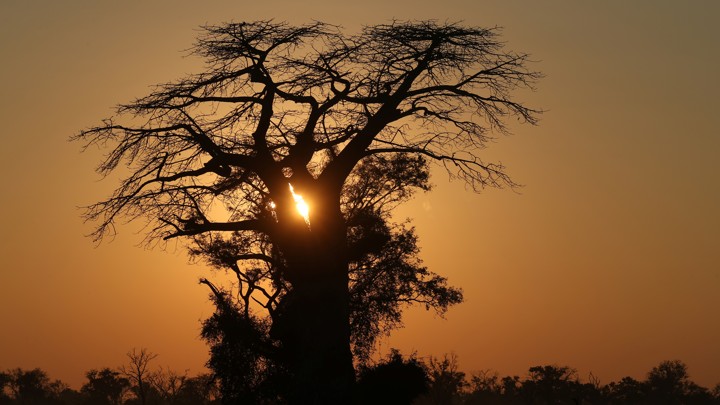Baobab Trees Are Suddenly Dying
Trees That Have Lived for Millennia Are Suddenly Dying

The oldest baobabs are collapsing, and there's only one likely explanation.
Around 1,500 years ago, shortly after the collapse of the Roman Empire, a baobab tree started growing in what is now Namibia. The San people would eventually name the tree Homasi, and others would call it Grootboom, after the Afrikaans words for “big tree.” As new empires rose and fell, Homasi continued growing. As humans invented paper money, printing presses, cars, and computers, Homasi sprouted new twigs, branches, and even stems, becoming a five-trunked behemoth with a height of 32 meters and a girth to match.
And then, in 2004, it collapsed.
The tree’s demise was sudden and unexpected. In March, at the end of the rainy season, Homasi was in full bloom. But by late June, its health had suddenly deteriorated. One by one, its stems broke off from the gargantuan trunk and toppled. The last of them fell on New Year’s Day, 2005, ending 15 centuries of life.
Common throughout sub-Saharan Africa, the African baobab is one of the biggest flowering plants in the world, and reputedly one of the longest-lived. It’s also known as the upside-down tree, because its bare branches look like roots, or as the monkey bread tree, because of its nutritious and edible fruit. It’s exceptionally long-lived, but recently, several of the oldest baobabs have been dying. Homasi, for example, was part of a grove of seven baobabs, six of which perished within a two-year period. [LINK ABOVE]

The oldest baobabs are collapsing, and there's only one likely explanation.
Around 1,500 years ago, shortly after the collapse of the Roman Empire, a baobab tree started growing in what is now Namibia. The San people would eventually name the tree Homasi, and others would call it Grootboom, after the Afrikaans words for “big tree.” As new empires rose and fell, Homasi continued growing. As humans invented paper money, printing presses, cars, and computers, Homasi sprouted new twigs, branches, and even stems, becoming a five-trunked behemoth with a height of 32 meters and a girth to match.
And then, in 2004, it collapsed.
The tree’s demise was sudden and unexpected. In March, at the end of the rainy season, Homasi was in full bloom. But by late June, its health had suddenly deteriorated. One by one, its stems broke off from the gargantuan trunk and toppled. The last of them fell on New Year’s Day, 2005, ending 15 centuries of life.
Common throughout sub-Saharan Africa, the African baobab is one of the biggest flowering plants in the world, and reputedly one of the longest-lived. It’s also known as the upside-down tree, because its bare branches look like roots, or as the monkey bread tree, because of its nutritious and edible fruit. It’s exceptionally long-lived, but recently, several of the oldest baobabs have been dying. Homasi, for example, was part of a grove of seven baobabs, six of which perished within a two-year period. [LINK ABOVE]